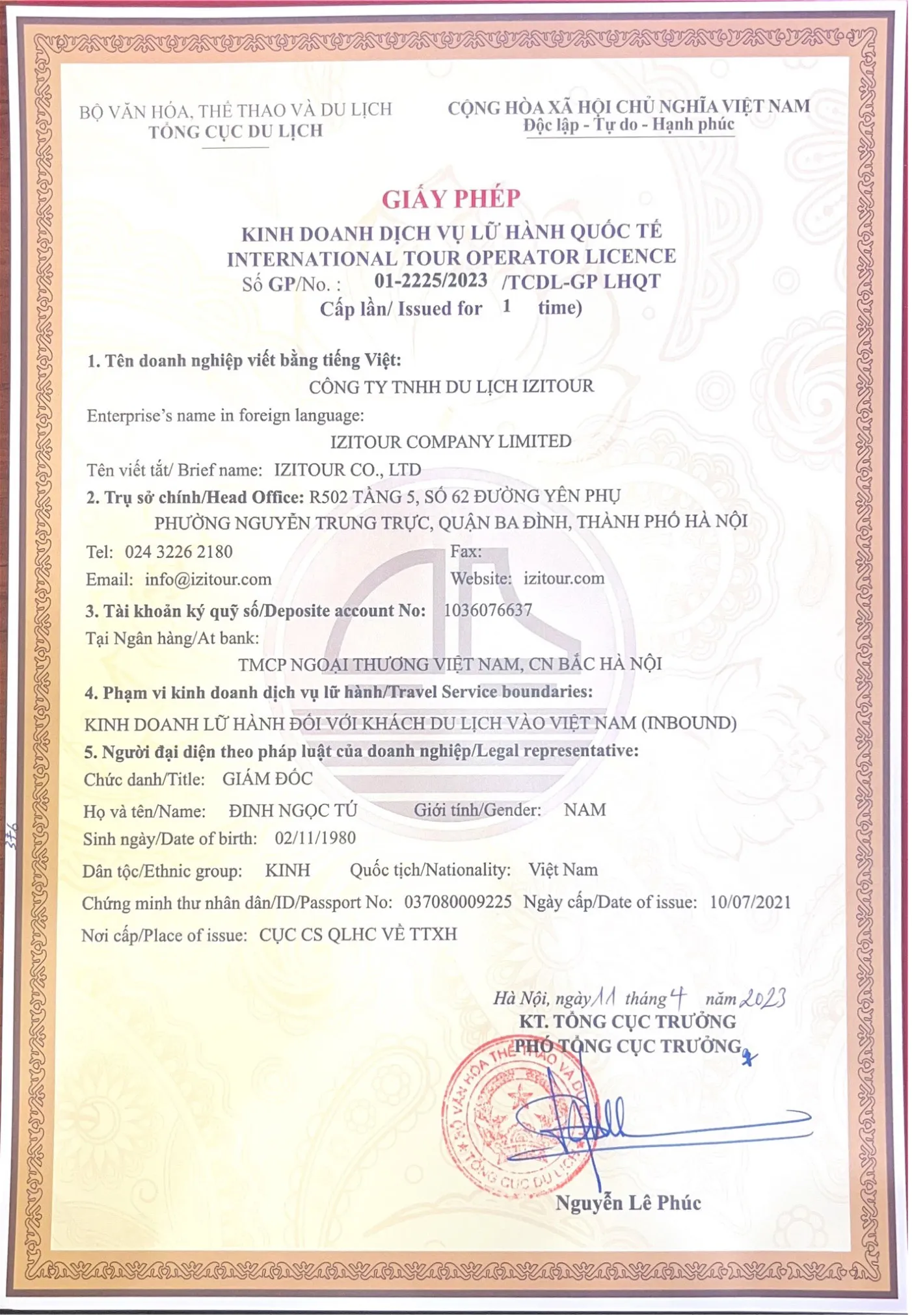Do you want to visit Sapa and the mountains of northwestern Vietnam, but you're hesitant about the increasing influx of tourists? Don't worry, there are still peaceful and authentic corners where nature and culture coexist harmoniously. Ta Van village, nestled in the heart of the Muong Hoa valley, is one of these hidden gems.
In the village, there are almost no crowds or concrete: just endless terraced rice fields, wooden stilt houses, and the sincere smiles of the ethnic minorities who have lived there for generations. Ta Van is an invitation to peace, walking, and discovering the true Vietnam.
What makes Ta Van Village unique?
Located in the heart of the Muong Hoa valley, about 10 kilometers from Sapa, Ta Van village offers a peaceful atmosphere, far from the tourist hustle and bustle. In the H'mong language, Ta Van means "big bend" – a poetic and precise image at the same time. The village stretches in an arc, backed by the Hoang Lien Son mountains and facing the Muong Hoa valley, where terraced rice fields extend as far as the eye can see.
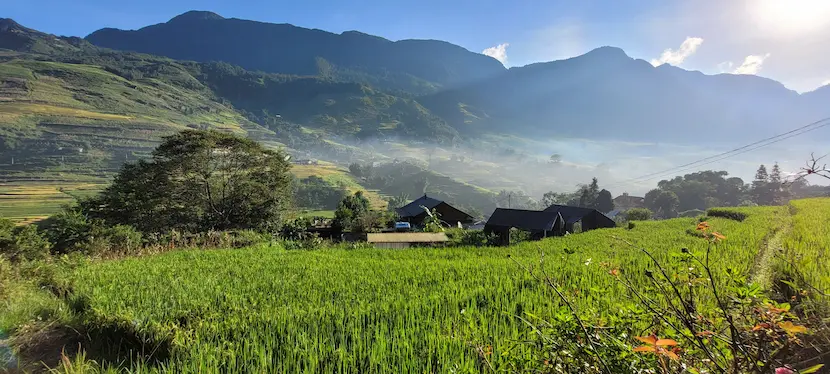
Ta Van is inhabited by several ethnic groups – the Black H'mong, the Red Dao, and especially the Giay. What makes the village unique is the harmonious coexistence of these cultures within a preserved environment. Despite the growing presence of tourists, local life retains its authenticity: residents cultivate rice, weave, and raise buffalo – just as they have for generations.
The landscape isn't staged for visitors: it's simply a faithful reflection of a mountain way of life. Small, narrow, winding dirt paths connect endless terraced rice fields, where golden ears of rice stack in layers like the pages of an old living book. During harvest season, the scent of ripe rice blends with that of damp earth, infusing the air with the rustic breath of life, hope, and perseverance.
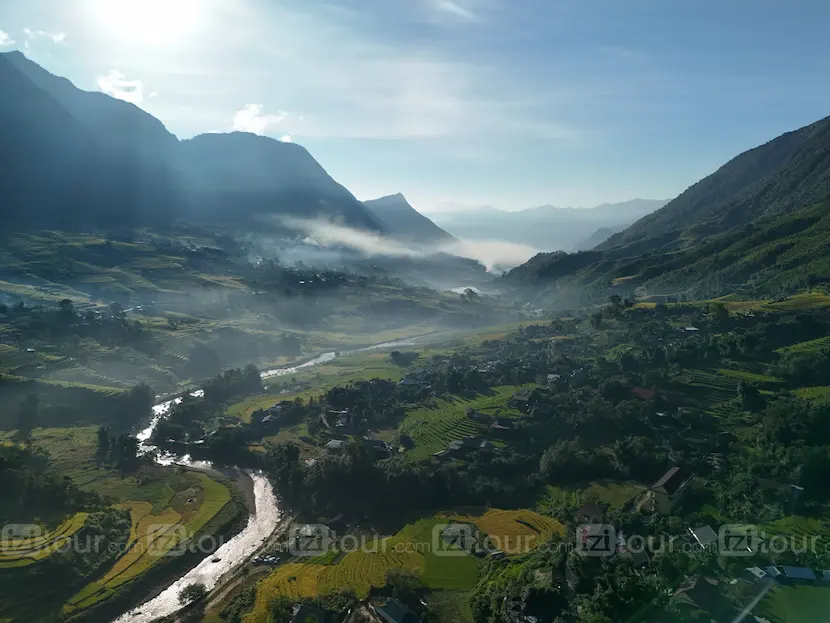
Children of ethnic minorities are everywhere in Ta Van, as if they are one with the landscape. Barefoot on the dirt roads, they play together, chasing each other with laughter, their cheeks smudged with dust, their knees covered in mud. Some guide buffalo to the fields, cut fresh grass for the animals... When visitors appear, some enthusiastically wave, shouting "Hello!" with wide smiles, proud and happy to share a few seconds of connection. Others lower their heads, avoid eye contact, pretend to be busy with something else, or discreetly slip away to hide behind a tree or a wall. And then, as soon as the visitor moves away, these same children run back out, taking a quick, curious glance... and perhaps a little disappointed not to have had the courage to say a word or make a gesture.
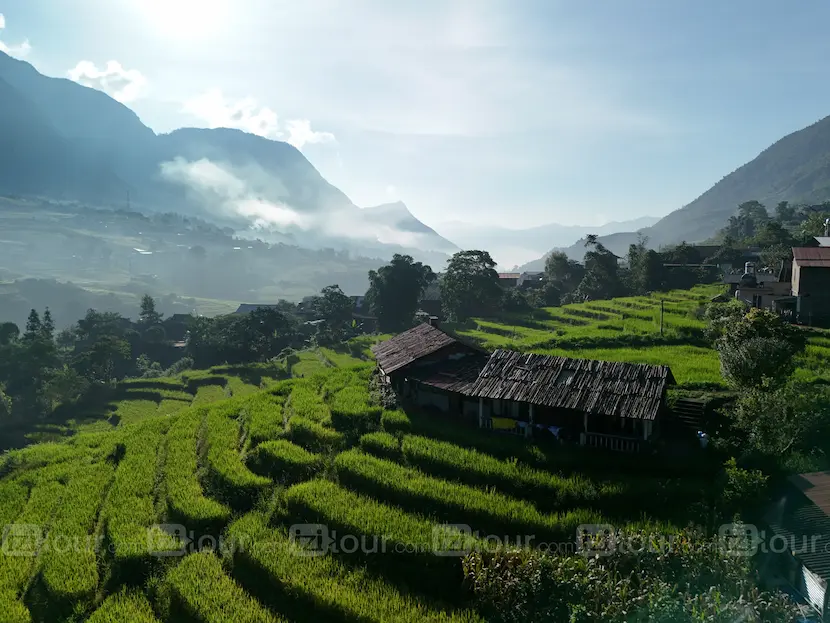
On the slopes, mud and thatch houses, built decades ago, nestle against the mountain. Some have cracked walls, worn roofs, rickety doors, so fragile that a gust of wind could carry them away... and yet, they are still there, standing, silent witnesses to life that continues.
What to do and see in Ta Van Village?
Explore the terraced rice fields
The rice fields snake along the hills and extend to the horizon. In Ta Van, they form a natural fresco with the surrounding mountains that is both grand and soothing. Throughout the seasons, the fields change their appearance: sometimes shimmering like vast water mirrors, sometimes golden like pieces of hand-woven carpet, or even vibrant green like immense rolls of silk unfurled on the slopes. Whether you are on a hiking trip or a leisurely stroll, every step in these landscapes is a gentle immersion into the agricultural soul of Northwestern Vietnam.
Check out our lastest video about Ta Van!
Discover the daily life of ethnic groups
Here, life doesn't put on a show... It simply flows, to the rhythm of the sun, harvests, and seasons. In the village alleys, you'll encounter H'mong women carrying heavy bundles, Giay mothers sewing in front of their homes, and Dao men repairing a thatched roof or carving the handle of a wooden tool.
Strolling through the village, it's not uncommon to be invited into a wooden house, sometimes over 90 years old. The residents are welcoming, always ready to share a moment. Particularly in Ta Van Giay, the oldest hamlet, you can also discover traditional craftsmanship, especially the making of handmade silver jewelry – a skill passed down through generations.

Immerse yourself in the weekly market
Every Sunday morning, a typical market is held in a village neighboring Ta Van, sometimes in Lao Chai or on the road to Sapa. It starts very early and begins to disperse around 1 PM. To fully enjoy the atmosphere, it's best to arrive in the morning. Locals, often in traditional costumes, come to sell produce from their gardens, rice, medicinal herbs, indigo fabric, or handmade silver jewelry.
It's a truly lively yet deeply authentic moment: some eat, others chat loudly, bargain, carry babies on their backs... Children run between the stalls. And very quickly, you get carried away by the human flow, you taste a fruit, exchange a few words, take photos, and find yourself experiencing this market from the inside, with them.
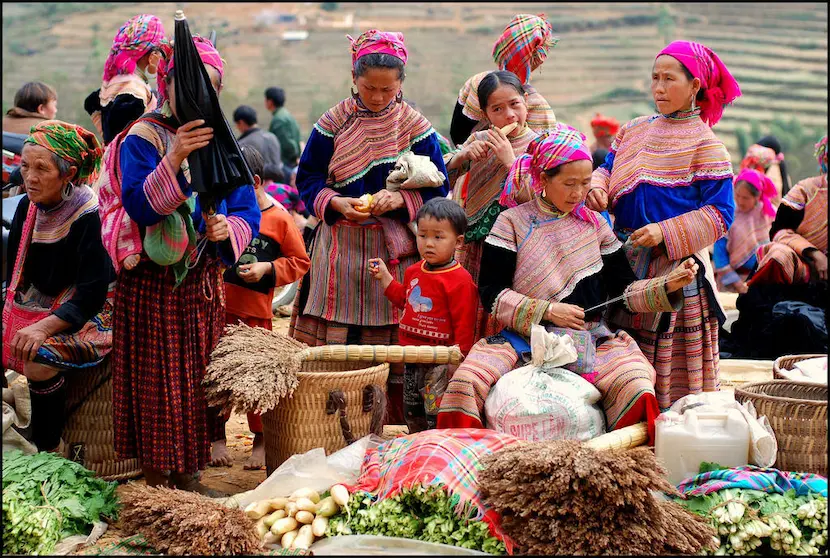
Savor local cuisine
In Ta Van, cuisine is experienced as much as it is eaten. In the small rustic houses, everything is prepared over a wood fire, with ingredients from the garden, field, or forest. Among the typical dishes: honey-grilled black pork, sautéed bamboo shoots, multicolored sticky rice, smoked eggs, or chicken and ginger soup. Nothing sophisticated, but everything is simple, generous, and deeply rooted in mountain life. And most importantly, don't leave without tasting a small glass of rượu ngô or rượu nếp, the local corn or rice wine!

Explore the surroundings
- The Muong Hoa Valley: a landscape of terraced rice fields crossed by a peaceful stream.
- The Cau May Bridge: an old wooden suspension bridge, perfect for a photo in the mist.
- Lao Chai village: neighboring Ta Van, known for its traditional H'mong houses.
- Cat Cat village: more touristy, but ideal for a quick getaway from Sapa.
- Mount Fansipan: the highest peak in Indochina, accessible by cable car or on foot.

Best time to visit Ta Van Village
At each season, Ta Van changes its appearance, offering visitors unique beauty. Sometimes shrouded in mist, sometimes gilded by harvests, this small village reveals its charm differently depending on the months of the year. Here are the best times to go, depending on what you're looking to experience.
December to April – The cloud season
This is the ideal period for those who dream of chasing clouds. In the early morning hours or late afternoon, thick blankets of white clouds float between the mountains, light as cotton. The atmosphere becomes peaceful, suspended, almost unreal – a paradise for lovers of poetic nature and photography.

August and September – The ripe rice season
This is one of the most spectacular times of the year. The terraced rice fields take on a dazzling golden hue, transforming the entire village into a bright and vibrant landscape. The sky is often clear, the climate pleasant, and visitors flock to capture the magic of the harvest in the mountains.
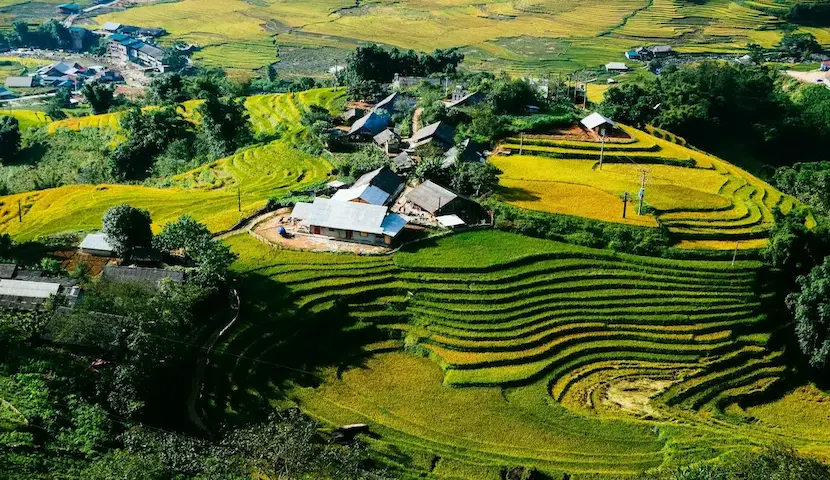
May to June – The water season
This short season marks the beginning of rice cultivation. The flooded rice fields reflect the sky, clouds, and mountains… like immense mirrors placed on the slopes. It's a powerful and living spectacle, evoking the deep connection between man and earth.
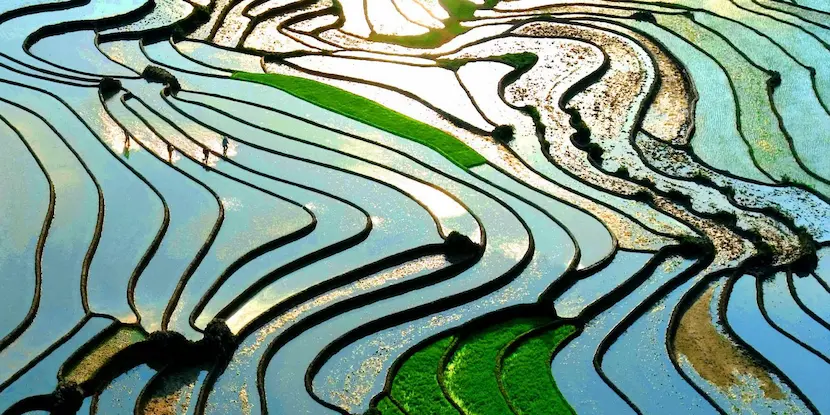
Mid-February – The plum blossom season
As winter comes to an end, plum trees begin to blossom. For only two to three weeks, the trails of Ta Van are covered with delicate white flowers, creating a soft, romantic, almost ethereal atmosphere. Ideal for those looking to capture the ephemeral beauty of the mountains in bloom.
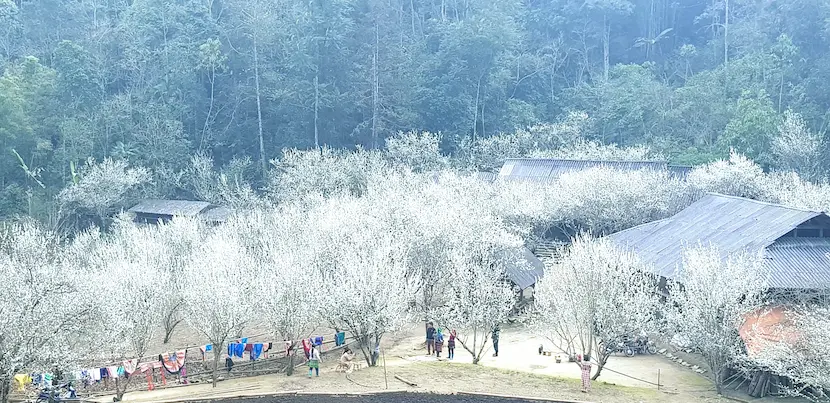
Entrance ticket and practical tips
Entrance fee
Access to Ta Van village requires a tourist entrance ticket, usually requested at the entrance to the Muong Hoa valley. The proceeds contribute to local development and the maintenance of trails and community infrastructure. However, ticket checks aren't too strict.
- Adults: 75,000 VND (≈ €2.8)
- Children (>1.2 m): 75,000 VND
- Children (<1.2 m): Free
How to get there?
Ta Van village is located about 10 km from the center of Sapa, so you can get there by motorbike, private car, or taxi. For walking enthusiasts, a hike from Sapa via Lao Chai is a beautiful alternative, offering magnificent landscapes and local encounters.
The road can be slippery or narrow during the rainy season – be cautious if you are driving yourself.
Ta Van village is not just a point on a map; it's a breath in the world's tumult, a place where time slows down, where every glance, every gesture, every path tells a story. Whether you come for the golden rice fields, the morning mists, the wood-fired meals, or simply to walk in silence, this small village in the Muong Hoa valley will undoubtedly leave you with something deeper than just beautiful photos.
Looking to discover Sapa, Vietnam with peace of mind? Searching for authentic experiences and wild destinations, far from the beaten path? IZITOUR, a local travel agency, can assist you in creating a tailor-made tour, perfectly adapted to your desires. Don't wait any longer! Contact us now at [email protected] or leave a comment to start planning an exceptional trip to Vietnam.
Read more:
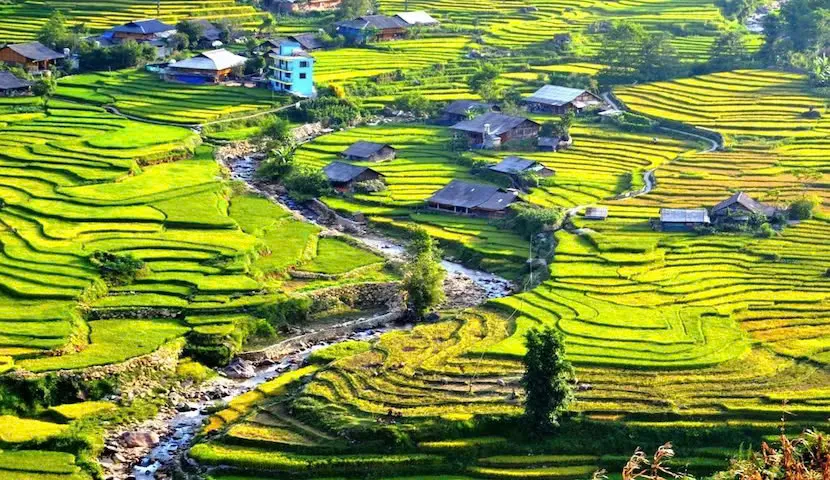







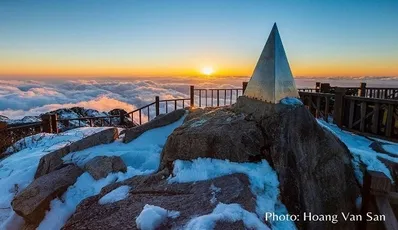

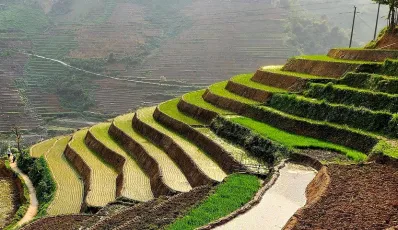


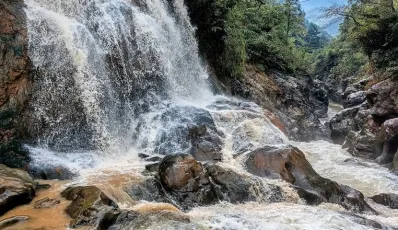
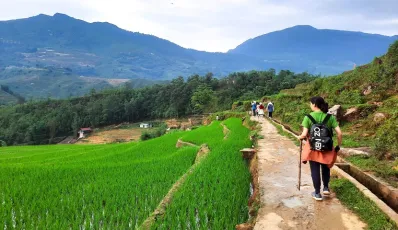
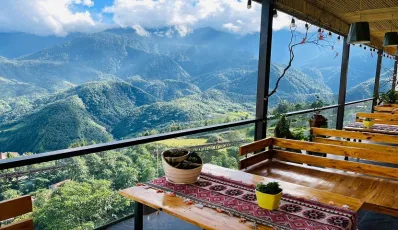
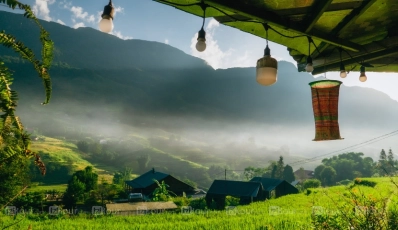
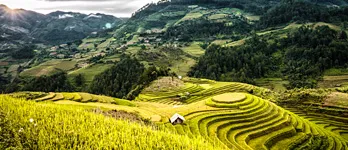
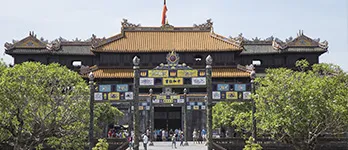
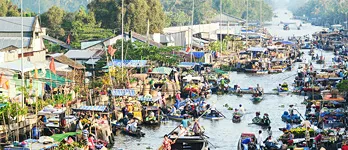

 TRAVELERS' CHOICE 2025
TRAVELERS' CHOICE 2025 